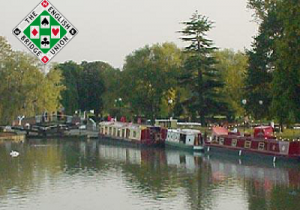 We previously announced that the Team Lavazza – Alejandro Bianchedi, Norberto Bocchi, Giorgio Duboin, Agustin Madala and, of course, Maria Teresa Lavazza – will participate in the Schapiro Spring Foursomes (Stratford-upon-Avon, May 2nd-6th), the British Isles’ toughest team congress. Now let’s look more closely into the matter.
We previously announced that the Team Lavazza – Alejandro Bianchedi, Norberto Bocchi, Giorgio Duboin, Agustin Madala and, of course, Maria Teresa Lavazza – will participate in the Schapiro Spring Foursomes (Stratford-upon-Avon, May 2nd-6th), the British Isles’ toughest team congress. Now let’s look more closely into the matter.
The event started in 1962 with a cup donated by Robert Provost, the owner of Crockford’s Club; it was then called just Spring Foursomes. In the early days it was held at a single venue at Eastbourne, but it grew and in the 1970s there were southern and northern venues, ending in a play-off between the two winning teams. A couple of years a third venue at Bath was tried. In 1992 it came back to one (more central) venue.
The event got its current name in 2004, when Helen, Boris Schapiro’s widow, gave some sponsorship money to aid the prize fund, which she still does. But Boris Schapiro hadn’t waited till 2004 for his name to be linked to the tourney: already in 1963 he’d won the second edition, with other three great champions: Terence Reese, Fritzi Gordon and Rixi Markus. Reese was his partner in 1955 Bermuda Bowl victory over the U.S.; Markus and Gordon made the all time strongest women pair.
The Foursomes title is currently held by Janet de Botton, David Burn, Thomas Charlsen, Thor Erik Hoftaniska, Artur Malinowski and Nick Sandqvist; no Italian players have ever won, and Lavazza is likely the first Italian team to participate.
The Schapiro Spring Foursomes was exceptionally tough even before the arrival of Lavazza, and not only because it’s the domain of the strongest British players and their friends – Robson, the Hacketts, Forrester, Welland, Auken, the Seniors, Penfold, Holland, et al. That’s because the format.
The formula of the tourney is double elimination; the teams, usually a fifty but this time more, are seeded according to their strength with the stronger lower-numbered ones initially matched against the weaker. In the very first round there will be some triangular matches in addition to the head to head ones, so that the field can be pared to a power of two (2-4-8-16-32-64 etc).There are two 32-hand matches a day except for Friday the 2nd, the starting day.
Now: What does happen when a team loses a match? Nothing but wounded pride at first: the moment a team loses one match, only one, it enters the field of Once Defeated Teams where it plays against others with one defeat, while the undefeated winners proceed forward in their own bracket. After some rounds which number depends on the number of the teams (last year it was at round 6th), there is the final between the last undefeated teams and five matches between the ten once defeated teams. The five winners of the latter matches (we are still describing what happened in 2013 as an example), plus the loser finalist will play each other; the three winners and the last undefeated team will play normal semi-finals and final; just the undefeated team has the right to lengthen the match by eight boards if it’s losing after the 32nd.
Is it clear enough? Not yet? No problem, you just must be aware that, after have defeated all, you still have to reckon with several once defeated teams, angry and seeking for vengeance; and, above all, be careful not to become a Twice Defeated Team, which is eliminated. There is however a “heaven” for casualties: The Punchbowl, run alongside the Schapiro, for teams that have been eliminated from the main competition. A victory in the Punchbowl is no trivial matter, since the winner must defeat, among others, at least one finalist of the main event.
And on the last day there is still another team event, the Hamilton Cup, which gathers the refugees from Schapiro Spring Foursomes and the Punchbowl.
Summarizing, at Stratford-upon-Avon there are five meaty days of bridge: there’s always a bridge table, cards and opponents waiting for those who can’t find the winning way.
Let’s now try to respond to the gist of the question: Why is the double-elimination Schapiro Spring Fours tougher than a simple knock-out format? I’d suppose it’s because when we lose our pride is wounded and our confidence is cracked; but in simple knock-out format we are out and can reassure ourselves by heartening fantasies about the luck of our opponents and the randomness of our distraction. In double-elimination format, instead, we have to fight on, wounded though we may be.
One member of Anita Sinclair’s Team is a champion who suggests how to better endure such an ordeal. Zia Mahmood, in his “Bridge My Way,” wrote that when young somebody taught him to play bridge with heart and feeling. That guidance, Zia wrote, came from no other than Boris Schapiro.
Acknowledgements. I thank Elena Jeronimidis, Jeremy Dhondy and Paul Gipson for the information they gave me about the event and its story, and Hanan Sher for the editing of this article.
***
Paolo Enrico Garrisi